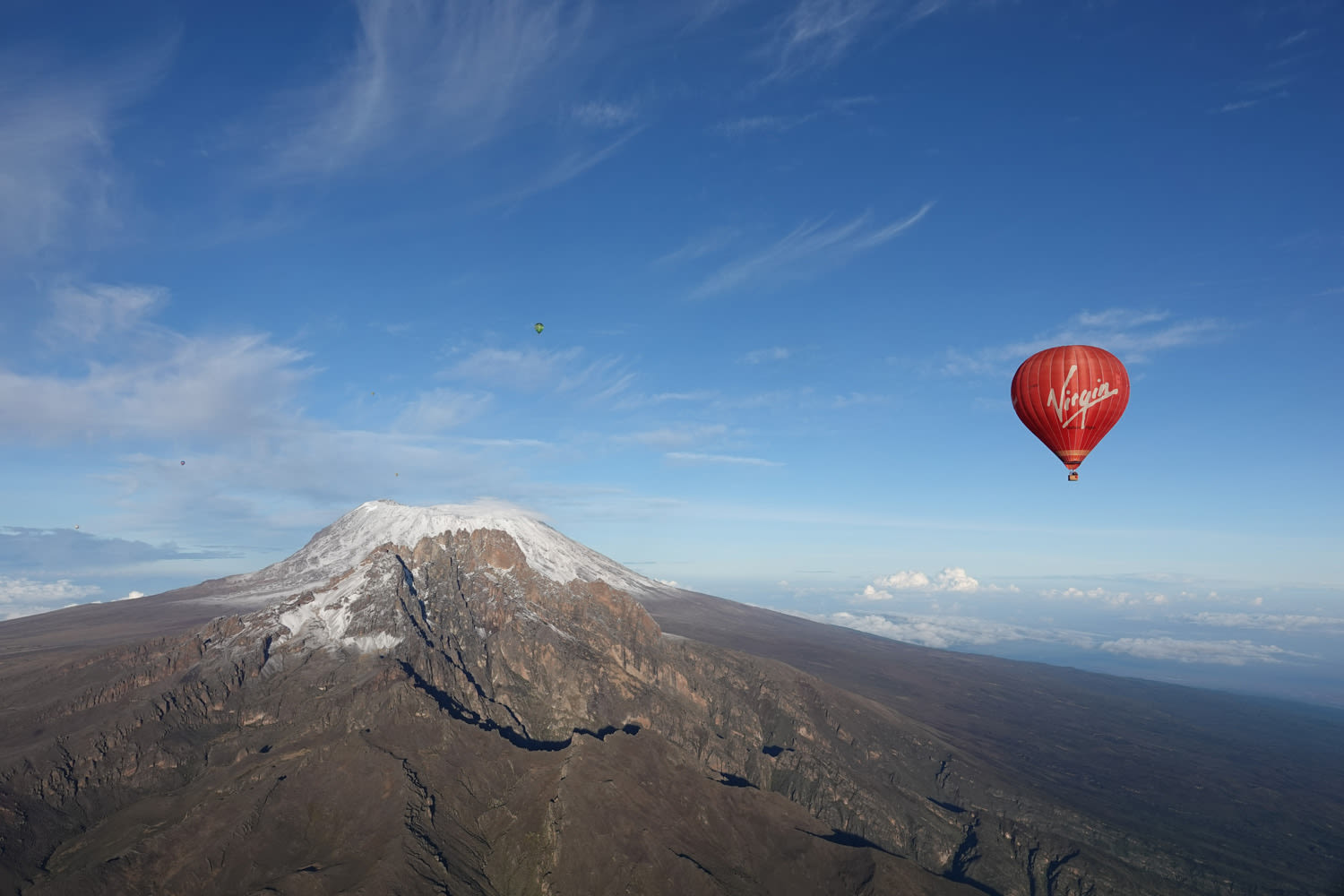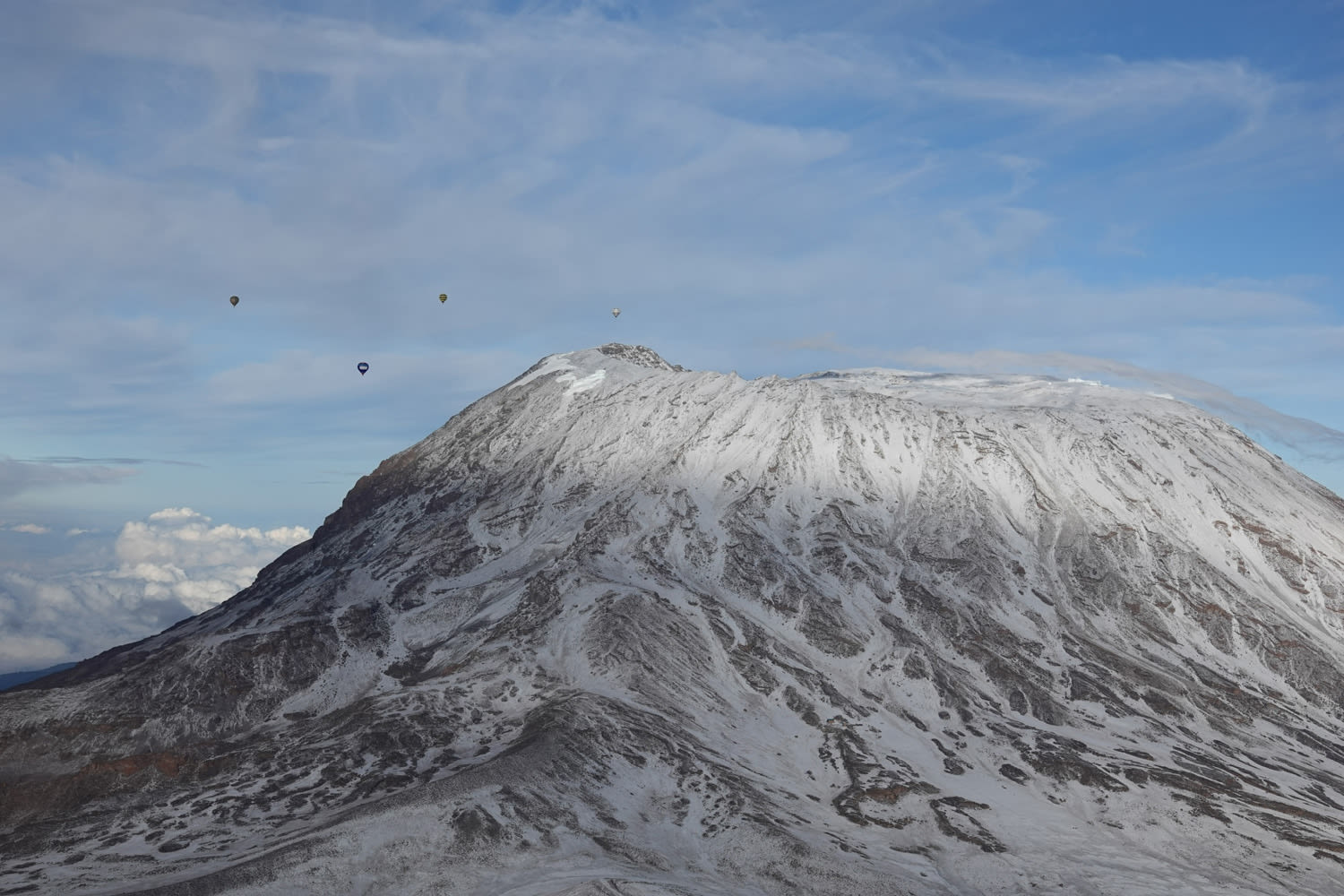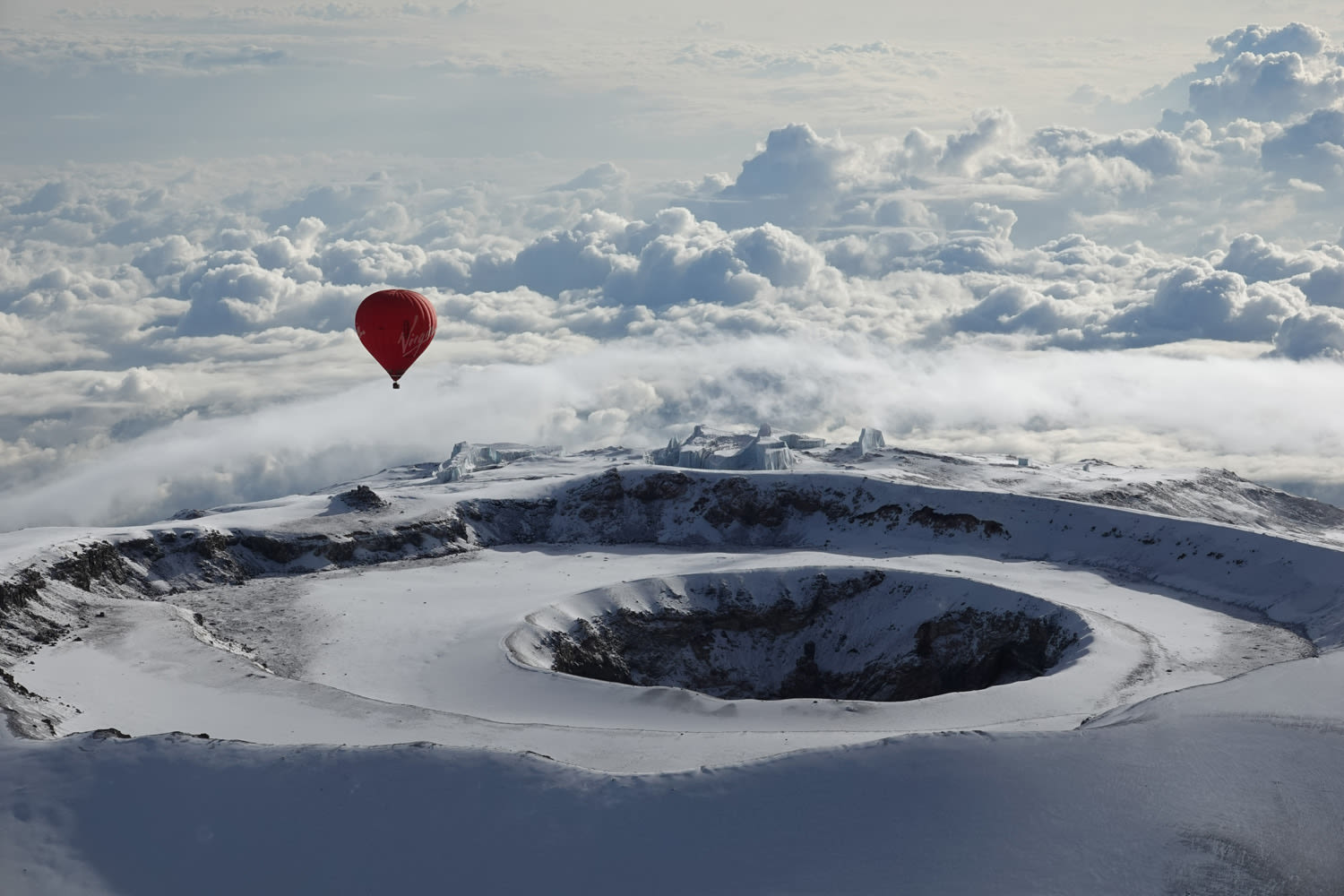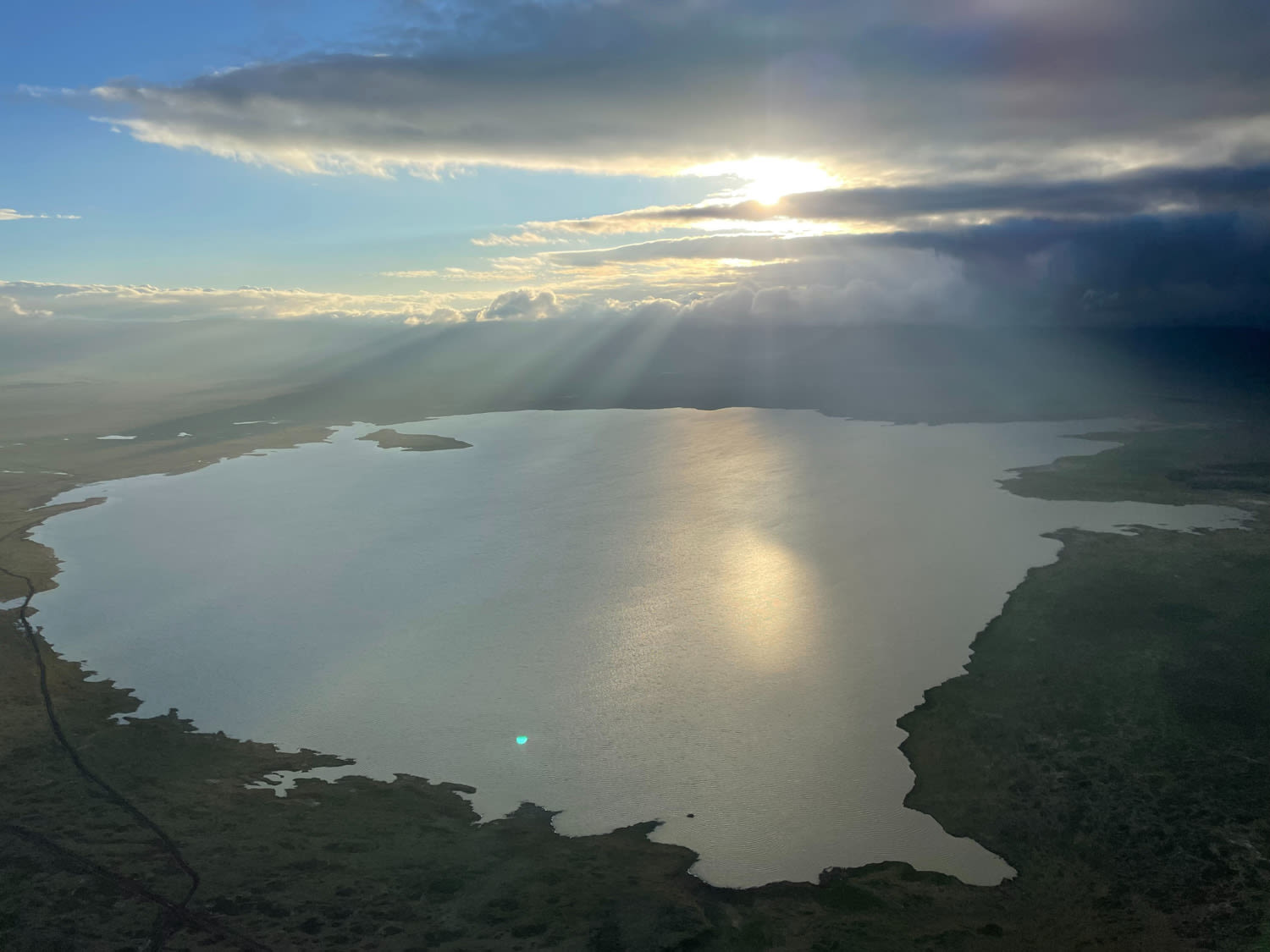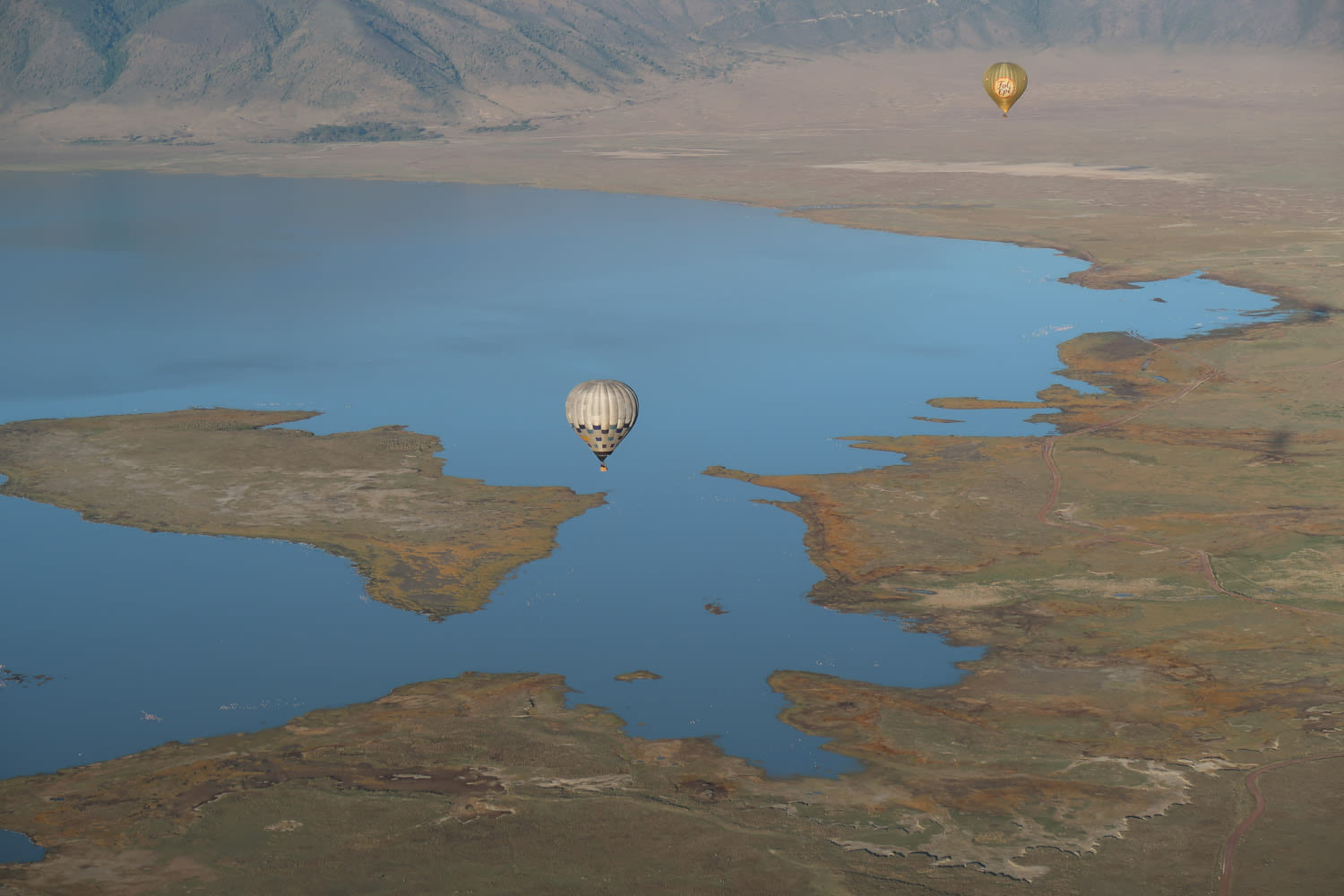An African adventure for a Virgin balloon
Richard Branson set multiple world records with his ballooning adventures in the 1980s and 1990s. So when Virgin Balloon Flights were asked to lend a balloon to another ballooning enthusiast to go on the trip of the lifetime, the team knew they had to do what they could to help.
The ballooning enthusiast in question is David Bareford, the father of one of Virgin Balloon Flights’ pilots. He was setting out on an adventure with balloon manufacturer and expedition facilitator Ultramagic to do two things: fly over Mount Kilimanjaro and then be one of the first to fly in the Ngorongoro Conservation Arena in northern Tanzania, crossing the Ngorongoro crater.
David is no stranger to challenging hot air balloon rides, having flown over Kilimanjaro 10 years ago with Ultramagic. He also won the National championships in Saga, Japan, in 1997 and Chatellerault, France, in 2002. Plus, he took home the bronze medal at the first World Air Games in 1997, and he’s taken part in competitions around the world. If anyone could take on a challenge like this, it was David.
Kilimanjaro challenge
On the morning of the Kilimanjaro flight, David and the other pilots took off at 5.45am. There had been a rainstorm earlier, but by the time the balloons were due to take off it was dry.
“The launch site was at 5,300 ft amsl (above sea level) and within a couple of hundred feet we had entered cloud,” David said. “We continued our steady ascent, breaking cloud at about 8,500 ft, to be greeted by a clear sky above, the two mountain peaks of Kilimanjaro clearly visible in front of us and the rain clouds behind us.
“We could see most of the early balloons way ahead of us and mostly to the left of the peak but by staying relatively low I found a direction that would allow us to steer towards the crater. We passed close over the peak of Mawenzi and then descended slightly to line ourselves up for the main peak and crater. After just over an hour’s flying and 19 miles from take-off we passed straight over the crater with 1200 ft to spare, lobbing a competition marker into the crater as we passed!”
David continued: “We flew on and at the far side the wind speed was slowing, dropping down to about eight knots and I became concerned that we would not have the duration to fly on to the landing area 15 miles beyond. After another hour and getting slightly nervous we had just reached the rainforest belt with the speed now down to barely five knots. We then heard on the radio from Stefan Zeberli that there were still about 20 knots at 10,000 ft so we started our descent. There was broken cloud below, so we flew on for another 30 minutes by which time the cloud had cleared and we were now well over the landing area on the far side. We initiated a descent virtually coming straight down from 10,000 ft to a stand-up landing near the road at a height of 4,800 ft amsl. We had flown for 50 miles in just over three hours and still had about hundred litres of fuel left.”
When asked how he felt about the whole experience, David said “This was probably one of the best flights I’ve ever done. When I did it 10 years previously, I had regretted not dipping down and really seeing the crater so I was glad I had a chance to go again and really appreciate it.”
On to Ngorongoro
There was no time to stop and celebrate the Kilimanjaro flight as next the team was off to Ngorongoro, a large crater 12 miles in diameter with steep sides. Ultramagic owner Josep Maria Llado had been trying for years to fly in or over the crater and this was the first time the balloons had been given permission.
The team set off for the launch site at 4am, with a strong breeze that looked like it might jeopardise the flight. They were told that although they could fly over the crater, they did not have permission to land in it so would have to fly beyond.
“The wind direction looked as though it would take us over a tall mountain beyond the crater edge to the west which the approaching dawn revealed, covered in cloud. As I prepared, the wind abated slightly allowing the balloon to inflate without problem and we were soon off,” David said. “The wind picked up again and several balloons had difficulty in inflating behind with two managing to drag their pickup vehicles across the launch site. By staying low but above the stipulated 1000 ft over the animals we tracked north-west straight across the crater and the large lake in the centre with great views of elephants, herds of zebra, wildebeest and buffalo.
“After an hour we crossed the crater rim passing over a herd of giraffe and headed out towards a large flat plain close to the road that ran from the crater rim down towards Olduvai Camp. We dropped down towards the plain covering the next 15 miles in only half an hour landing at about 20 knots on very firm but flat scrubland.”
With the flight over Ngorongoro completed, the adventure was over, but we’re sure it’s one that David and his fellow pilots won’t forget anytime soon. He commented: “With the pandemic now into its second year it had made this adventure all the more special and memorable.”
And plans are already afoot for the next adventure. We can’t wait to see where the balloons will float next.
Want to experience the thrill of a balloon ride for yourself? Visit Virgin Balloon Flights to start making your plans.
